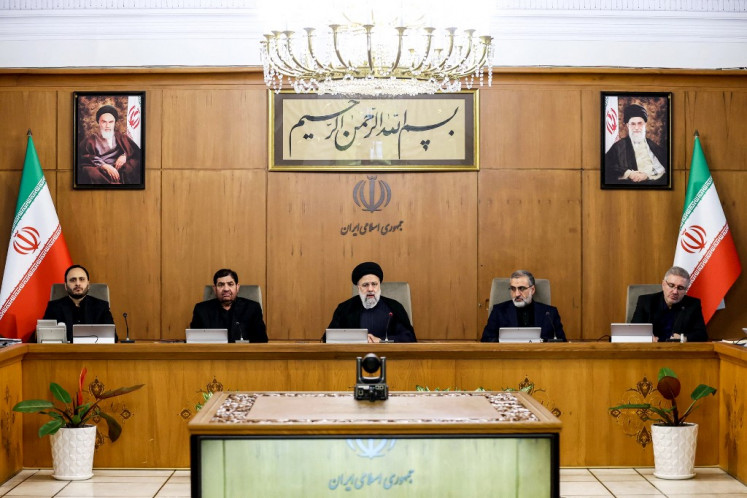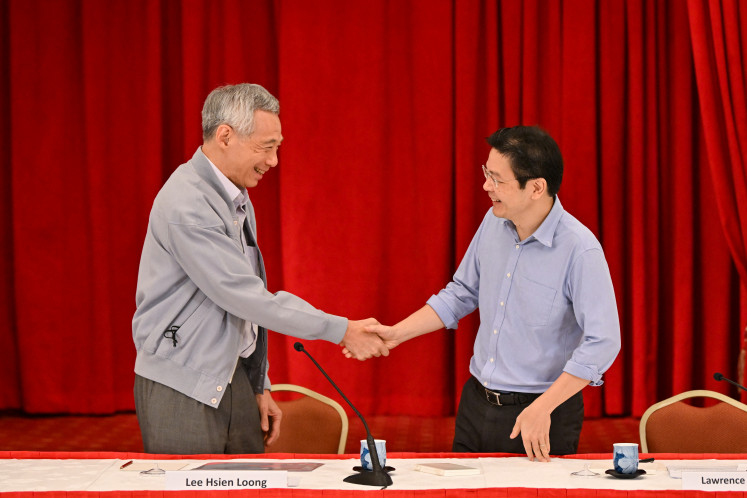Port integration: Keeping the crowding out effect at bay
Port integration policies can stimulate economic growth of cities and their effect grows with time.
Change Size

T
he much-anticipated merger of state-owned port operators has been finalized. This port integration policy was made official in a deed of merger of four state-owned ports, PT Pelabuhan Indonesia I, PT Pelabuhan Indonesia III and PT Pelabuhan Indonesia IV, all merging into PT Pelabuhan Indonesia II acting as the surviving entity. This merger effectively consolidates more than 90 percent of the market. One of the stated goals of this merger is to reduce the cost of logistics in Indonesia, which at this very moment is the highest among ASEAN countries.
Experiences from other economies demonstrate interesting outcomes of integration in the transportation sector. Port integration strategy in China is said to give an effective boost to the growth of transportation networks. Moreover, port integration policies can stimulate economic growth of cities and their effect grows with time. The case of China demonstrates that the impact of port integration is larger on small and medium-sized cities. This implies that merging of port operations could help make for more equitable economic development across the vast archipelago
But the experience in Argentina demonstrated inefficiencies in its port system. Owing to significant heterogeneity between port service providers, where private port operators are more efficient than state-owned ones, the integration of state-owned port operators in Argentina crowded out efficient private providers.
While many would be enamored by the idea of the state’s involvement in pretty much everything that we do, crowding out efficient private port operators is doing more harm than good for the economy. In a complete crowding out scenario, increased public investment does not effectively raise gross domestic product (GDP) because it simultaneously distorts the investment cost of the private sector as investments are driven out to friendlier economies.
The contrasting tale of China and Argentina suggests that there are two sides to port mergers. Port integration in Indonesia has been promoted as a solution to high logistics costs. Measures of efficiency and productivity will become more transparent to public auditors and users alike.
This all sounds good so far. However, the consolidation market power of state-owned port operators lends them the ability to set terminal handling charges (THCs) or lift on lift of (LoLo) costs above the market-clearing equilibrium like a monopoly would. Economics 101 warns us that monopolistic price setting is distortive, causing a dead-weight loss to the overall supply-chain economy, leaving everybody worse off.
This especially rings true if integration fails to shorten the waiting time in our ports. A 2020 Review of Maritime Transport published by the UN Conference on Trade and Development (UNCTAD) reports that the 2018-2020 median waiting time of container ships in Indonesian ports still hovers around one day. This is higher than neighboring Singapore and Malaysia (at 0.8 days) as well as Vietnam and the Philippines (0.9 days).
Extended waiting times are reflective of the low productivity of our ports, measured by the rate of container loading and unloading per ship-hour. The same 2018-2020 UNCTAD review found that Indonesian ports fared lower compared to their counterparts in Singapore, Malaysia, Vietnam, the Philippines, as well as the global average.
Take 2020 for example. The high-capacity regional transhipment port hub in Singapore was able to handle 272 containers per ship-hour thanks to its extensive quay container crane operations. Malaysia, Vietnam and the Philippines were able to handle 193, 91 and 87 containers per ship-hour respectively – a markedly higher productivity rate than Indonesia’s 64.
The merger is also hoped to boost the financial performance of our state-owned port operators. The financial performance of Pelindo II, the surviving entity in the merger, is relatively weak compared to industry peers. Bloomberg Intelligence Port data on major Asian ports show that Pelindo II’s revenue decreased 2.58 percent in 2020 after a 6.18 percent decrease in 2019. In contrast, Asian peers booked an average 0.25 percent revenue increase in 2020 and a 2.9 percent decrease in 2019. Pelindo II’s operational net profit margin in 2020 was reported at 11 percent, less than half the Asian regional average at 22.85 percent.
Vertical and horizontal integration might also erode the effectiveness of port regulations. For example, Government Regulation No. 32/2021, which allows a licensing and concession period for private port-operators of 80 years, was designed to improve revenues. This regulation was enacted in exchange for the abolition of the mandatory minimum operation time for special purpose and self-operated port terminals. However, the consolidation of state-owned port-operators, which gives rise to their market power, would pose a challenge and therefore crowd out private sector operators.
In conclusion, the merger of state-owned port operators has the potential to boost and make economic growth more equitable. This can only be achieved with improved service quality and fruitful cooperation with stakeholders. A 2015 World Bank study reports that around 10 to 20 percent of logistic costs in eastern Indonesia are attributable to waiting time.
The example from Palaran port in East Kalimantan taught us that a significant increase in port efficiency and reduced dwelling time can slash THCs by more than half, from Rp 9 million (US$621) to Rp 4 million per container for the Jakarta-Samarinda route. In turn, the general public will benefit if these efficiency gains are transmitted to households as reflected in the Consumer Price Index (CPI) and other macroeconomic indices.
That said, getting the most out of this merger will depend largely on improving port efficiencies while keeping the crowding out effect at bay. This is indeed what port operators need to work on moving forward. Concerns over port issues have been repeated by the highest office in Indonesia.
The October merger should be an opportunity for efficiency improvements and an equitable economic recovery.
***
Harya S. Dillon is secretary-general of the Indonesian Transportation Society (MTI). Ibrahim Kholilul Rohman is head of Samudera Indonesia Research Initiatives (SIRI). The views expressed are their own.









